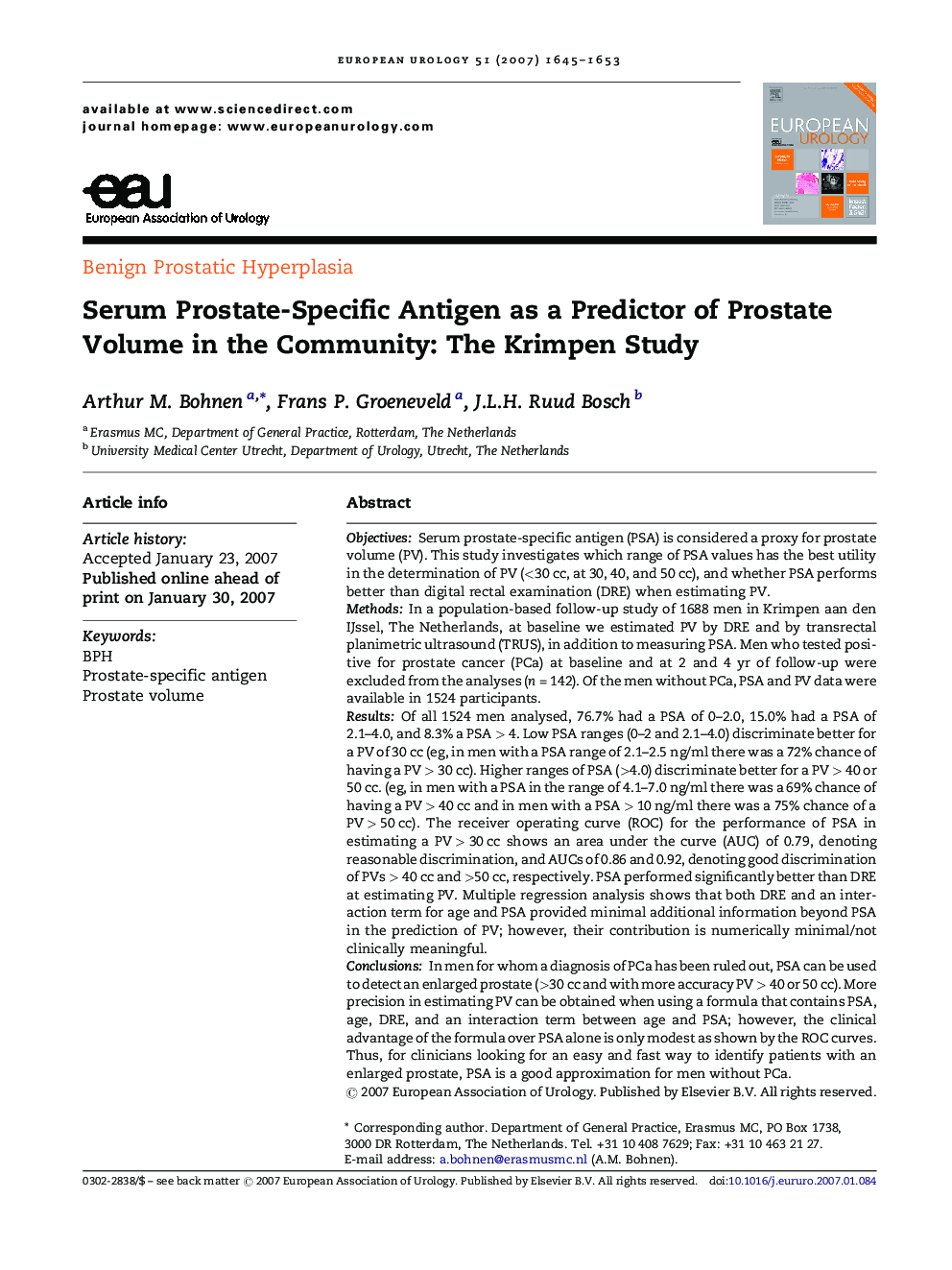| کد مقاله | کد نشریه | سال انتشار | مقاله انگلیسی | نسخه تمام متن |
|---|---|---|---|---|
| 3928499 | 1253202 | 2007 | 9 صفحه PDF | دانلود رایگان |

ObjectivesSerum prostate-specific antigen (PSA) is considered a proxy for prostate volume (PV). This study investigates which range of PSA values has the best utility in the determination of PV (<30 cc, at 30, 40, and 50 cc), and whether PSA performs better than digital rectal examination (DRE) when estimating PV.MethodsIn a population-based follow-up study of 1688 men in Krimpen aan den IJssel, The Netherlands, at baseline we estimated PV by DRE and by transrectal planimetric ultrasound (TRUS), in addition to measuring PSA. Men who tested positive for prostate cancer (PCa) at baseline and at 2 and 4 yr of follow-up were excluded from the analyses (n = 142). Of the men without PCa, PSA and PV data were available in 1524 participants.ResultsOf all 1524 men analysed, 76.7% had a PSA of 0–2.0, 15.0% had a PSA of 2.1–4.0, and 8.3% a PSA > 4. Low PSA ranges (0–2 and 2.1–4.0) discriminate better for a PV of 30 cc (eg, in men with a PSA range of 2.1–2.5 ng/ml there was a 72% chance of having a PV > 30 cc). Higher ranges of PSA (>4.0) discriminate better for a PV > 40 or 50 cc. (eg, in men with a PSA in the range of 4.1–7.0 ng/ml there was a 69% chance of having a PV > 40 cc and in men with a PSA > 10 ng/ml there was a 75% chance of a PV > 50 cc). The receiver operating curve (ROC) for the performance of PSA in estimating a PV > 30 cc shows an area under the curve (AUC) of 0.79, denoting reasonable discrimination, and AUCs of 0.86 and 0.92, denoting good discrimination of PVs > 40 cc and >50 cc, respectively. PSA performed significantly better than DRE at estimating PV. Multiple regression analysis shows that both DRE and an interaction term for age and PSA provided minimal additional information beyond PSA in the prediction of PV; however, their contribution is numerically minimal/not clinically meaningful.ConclusionsIn men for whom a diagnosis of PCa has been ruled out, PSA can be used to detect an enlarged prostate (>30 cc and with more accuracy PV > 40 or 50 cc). More precision in estimating PV can be obtained when using a formula that contains PSA, age, DRE, and an interaction term between age and PSA; however, the clinical advantage of the formula over PSA alone is only modest as shown by the ROC curves. Thus, for clinicians looking for an easy and fast way to identify patients with an enlarged prostate, PSA is a good approximation for men without PCa.
Journal: European Urology - Volume 51, Issue 6, June 2007, Pages 1645–1653